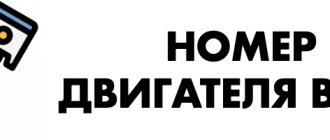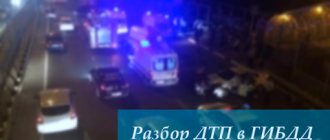Boring but correct advice
Pavel Biketov, director of the department of examination and settlement of losses of the insurance company
Pavel Biketov, director of the department of examination and settlement of losses of the insurance company
If the culprit of the accident has disappeared and the victim does not have a motor insurance policy, you should wait for the traffic police officers, since according to the European protocol, without identifying the second participant in the accident and the fact of insuring his civil liability, it is impossible to receive an insurance payment. While waiting for the traffic police officers, you need to remember or record the maximum amount of information about the culprit of the accident (make, model of the vehicle, color, body type, license plate, special features), try to find witnesses to the accident and write down their contact information, pay attention to the presence of CCTV cameras located nearby buildings, if the accident is not recorded on the video recorder.”
The procedure for drawing up a diagram and protocol of an accident
- The road accident diagram must indicate the contours of the roadway, the names of streets (roads, etc.), the direction of movement, the location of vehicles (hereinafter referred to as vehicles) “A” and “B” at the time of the collision and the final positions of these vehicles, road signs, signs, traffic lights, road markings, width of the roadway, objects related to this accident, fences, sidewalks, brake marks, location of damaged parts, etc.
- How to go to the scene of an accident and draw up a diagram and protocol is described in detail in the Order of the Ministry of Internal Affairs, which approved the administrative regulations for the supervision of compliance by road users with legal requirements.
- The road accident diagram must be drawn up carefully, indicating all the necessary information. When participating in drawing up a diagram, carefully look at what is reflected in it.
- It must be indicated directly on the diagram that this is a “road accident diagram” or “a diagram for the accident scene inspection protocol.” It is necessary to indicate on the diagram the location of the incident, date and time.
- After the diagram, it is necessary to indicate who drew up the diagram of the accident, if there were attesting witnesses, the indicated persons should also be indicated in the diagram and they must sign. Those involved in an accident must indicate whether they agree with the accident diagram or not and sign accordingly. The diagram must also indicate symbols and their interpretation.
In addition to the road accident diagram, traffic police officers draw up a protocol for inspecting the accident site if harm is caused to the health of the victim. The diagram is an appendix to the specified protocol:
When drawing up the protocol, there must be two clear ones or a video recording must be made.
The protocol states:
- date and place of compilation,
- surname and initials and position of the person who drew up the protocol,
- information about the person who was driving the vehicle at the time of the accident, as well as the type, make, model, license plate number of the vehicle,
- Names and addresses of witnesses, witnesses and victims,
- the incident itself is described directly, namely, when, at what time, in what place, what happened,
- article providing for liability for the offense committed,
- OSAGO policy number,
- driver's license number;
- information about the place of work and telephone number.
The protocol must also reflect:
- actions of the official and their order.
- in what condition and quality of the road surface,
- are there road markings,
- How illuminated is the road section of the accident site?
- if an accident occurs at an intersection, what kind of intersection is it (controlled or unregulated), is the traffic light working, what signs are there,
- other circumstances of significant importance may also be indicated. In particular, the protocol reflects information about the inspection of the vehicle, what damage the vehicle has, and other information.
Persons who participate in the inspection may make statements that must be reflected in the protocol. In addition, these persons must be explained their rights and obligations, which must be recorded in the protocol.
If video or photography is used during the inspection, a note is made about this in the protocol.
The protocol is signed by the official and the persons who participated. Copies of the protocol are given to the persons who were driving the vehicle at the time of the accident.
How to speed up inspectors?
No matter how cynical it may sound, you are primarily interested in a quick and successful resolution of the issue - you should take the initiative.
Sergei Radko, lawyer for the “Freedom of Choice” motorists movement
Sergei Radko, lawyer for the “Freedom of Choice” motorists movement
I recommend re-reporting the accident approximately 30 minutes after the first call to emergency services. It is better to call “02” or “112”, since such calls are monitored by regulatory authorities more carefully than calls to the territorial traffic police department. It’s not a fact that “systematic calling” will speed up the crew’s arrival, but it won’t hurt to do so. Your application may have gotten lost in a series of other requests, or another signal about an incident may have been received, to which the inspectors are closer.
Be sure to explain to the dispatcher that your car is on the roadway and is making it difficult for other road users to pass. You do not have the right to move the car yourself, since the second driver fled the scene of the accident. Consequently, you create conditions for other accidents to occur on this section of the road. Such information will allow traffic police officers to correctly “prioritize”: first of all, they will need to process your call, and only then go to those accidents whose participants have the opportunity to drive cars to the side of the road.
Why does the traffic police refuse to respond to an accident?
Despite the introduction of the European protocol, motorists continue to face the problem of many hours of waiting for traffic police crews after road accidents.
Participants in road accidents note that recently situations when traffic cops simply do not want to come to the scene of an accident have begun to arise more often. Although they have no right to do so. However, as noted in the law enforcement environment, this is due to the lack of human resources of the state traffic inspectorate.
Instead of completing everything on the spot, traffic police officers suggest that drivers do this themselves and then go to the nearest office with all the papers. But there drivers have to spend several hours in endless queues with fellow sufferers.
Sometimes victims of road accidents are helped by the European protocol. As part of this procedure, it is not necessary to call the police. It is enough to fill out all the documents about the incident yourself or you can contact the emergency commissioner. But, as you know, in order to use the European protocol, several conditions must be met. Firstly, no more than two cars were involved in the accident, secondly, both participants are insured, only the vehicles were damaged, the drivers have no disagreements about the circumstances and the culprit of the accident.
Not every accident meets all these parameters. For example, drivers often cannot agree who is to blame. This means that the inspector must draw up a protocol. Or one of the cars has comprehensive insurance. But in practice, it turns out that drivers often do not wait for the patrol car. Moreover, the dispatcher can directly warn that traffic police officers will not arrive, knowing that there are no free cars.
One of the car enthusiasts shared the story of his accident, in which he was the injured party. Moreover, he agreed to leave the scene of the accident and begin repairing his car himself. However, the culprit had a comprehensive insurance policy, so it was necessary to register the accident with the traffic police. Drivers were asked to take a photo and drive to the nearest police station, where they spent more than 9 hours in queues.
Since many participants in accidents have disagreements, investigations are delayed, victims say. But often motorists do not dare to record an accident on their own, fearing that the insurance company will later refuse to pay due to allegedly incorrectly executed documents. As a result, there is pandemonium in the traffic police departments, people spend not only many hours in queues, but also nerves. And also trust in the system for analyzing road accidents. Meanwhile, the traffic police management admits that it is the responsibility of inspectors to attend accidents if car owners require their presence. At the same time, experts note that it is pointless to complain about the slowness of traffic police crews, since the department can always refer to a shortage of personnel.
Apparently, the situation will not be radically improved in the near future. However, the State Traffic Safety Inspectorate, together with car insurers, is counting on the development of the Europrotocol institution in such a way that by 2030, up to 100 percent of all accidents on Russian roads will be processed with its help.
For this purpose, new parameters for simplified registration of road accidents are being introduced. In particular, this year the damage limit for the application of the European protocol has been increased from 100 to 400 thousand rubles. In the future, experts will have to work to remove other barriers that impede the mass dissemination of the European protocol. When they are overcome, the burden and complaints regarding the traffic police will be significantly less. And it will be easier for drivers.
When the traffic police are called to the scene of an accident
When should you call the traffic police to report an accident?
Most drivers believe that if an accident occurs on the road, then it is impossible to do without the participation of the traffic police. But it is not so.
There are some cases where there is no need to call law enforcement officers.
Such cases include:
- Only two cars were involved in the incident on the road;
- There were no casualties (wounded, dead) as a result of the accident;
- The result of the accident was damage to the vehicle that caused the accident;
- The participants in the accident are the owners of the MTPL insurance policy;
- The drivers intend to resolve the issue on their own, as they have come to a common opinion;
- Both car owners agree to file an accident according to a simplified version.
If any of the above points are missing, you will not be able to avoid contacting the traffic police.
What do traffic police officers do at the scene of an accident?
If there is such a need, participants in a traffic accident have to call law enforcement officers to the scene of the collision.
The task force, which usually goes on call, consists of several employees. It includes:
- directly from the traffic police;
- investigator from the Department of Internal Affairs;
- forensic experts.
The perpetrators of an accident are not always conscious people. If the culprit fled the scene, a criminal investigation officer is also included in the task force.
Members of the task force, going to the scene of an accident, perform the following actions:
- draw up a protocol for the initial inspection of the accident site;
- draw up an accident diagram, which records the direction of the vehicles involved in the accident, as well as the contour of the road;
- fill out a certificate regarding the incident;
- record the results of the vehicle inspection in the protocol;
- take testimony from the drivers who were driving the cars at the time of the accident;
- record the testimony of witnesses to the incident;
- check the condition of drivers and test them for alcohol or drug intoxication.
If the incident is not reportable (non-reportable accident), only a traffic police officer is called to the scene of the accident.
The inspector has certain responsibilities. He must draw up a diagram of the incident, record the testimony of participants and eyewitnesses.
In addition, the inspector draws up a protocol on an administrative violation. This document contains information about damage to vehicles. If material evidence in the case is discovered, it will also be attached to other documents.
The traffic police inspector should not conduct a test to detect alcohol in the blood of any driver. This is usually the prerogative of doctors. But if such a need arises, the inspector can do it himself.
Properly completed documentation after an accident is a guarantee that the incident will be investigated within the time allowed by law and no obstacles will arise to reaching a verdict.
It is important for the task force employees to correctly collect all the necessary documentation on the accident, and correctly draw up a protocol and diagram of the accident. Participants in the accident should also not remain aloof from the preparation of documents.
Drivers must control the information entered into the documents. If there are discrepancies with the actual facts, this should be immediately brought to the attention of the traffic police.










